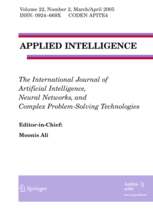
APPLIED INTELLIGENCE
Scope & Guideline
Advancing the frontiers of Artificial Intelligence applications.
Introduction
Aims and Scopes
- Artificial Intelligence Applications:
The journal covers a wide range of applications of AI, including healthcare, finance, transportation, and environmental monitoring, focusing on how AI can be used to enhance decision-making, prediction, and automation. - Machine Learning Techniques:
Research on various machine learning techniques, including supervised, unsupervised, and reinforcement learning, is a core focus. This includes advancements in neural networks, deep learning, and ensemble methods. - Data Mining and Knowledge Discovery:
The journal publishes studies on data mining techniques, including frequent pattern mining, anomaly detection, and knowledge graph construction, highlighting how these methods can be integrated into intelligent systems. - Optimization Algorithms:
Research on optimization techniques, including genetic algorithms, swarm intelligence, and hybrid methods, aimed at improving the performance of AI systems in various applications. - Human-Computer Interaction:
The journal explores how AI can enhance human-computer interaction, focusing on user experience, adaptive interfaces, and personalized systems. - Explainability and Interpretability of AI:
There is a growing emphasis on the explainability of AI models, addressing the need for transparency and trust in AI systems, particularly in sensitive applications like healthcare and finance.
Trending and Emerging
- Deep Learning Innovations:
There is a significant increase in publications focusing on innovative deep learning architectures and techniques, particularly in areas like computer vision, natural language processing, and generative models. - Federated Learning and Privacy-Preserving Technologies:
Research in federated learning has gained momentum, reflecting a growing concern for data privacy and security, especially in applications involving sensitive personal data. - Explainable AI (XAI):
The demand for explainable AI has surged, with researchers exploring methods to make AI systems more interpretable and accountable, addressing ethical concerns in AI deployment. - AI for Social Good:
A notable trend is the application of AI to address social challenges, such as healthcare disparities, climate change, and disaster response, indicating a broader societal impact focus. - Integration of AI with IoT and Edge Computing:
The convergence of AI with the Internet of Things (IoT) and edge computing is emerging as a critical research area, emphasizing real-time data processing and intelligent decision-making on devices. - Multi-Modal Learning:
There is an increasing interest in multi-modal learning approaches that combine data from various sources (text, images, audio) to enhance model performance and robustness.
Declining or Waning
- Rule-Based Systems:
While rule-based systems were once a significant focus in AI research, their prominence has diminished in favor of data-driven approaches, particularly deep learning models that offer greater flexibility and accuracy. - Traditional Expert Systems:
The decline in the publication of traditional expert systems indicates a shift towards more adaptive and learning-based systems that can handle uncertainty and variability in real-world applications. - Static Machine Learning Models:
There is a noticeable reduction in research on static models that do not adapt or learn from new data, as the field moves towards dynamic and continual learning frameworks. - Basic Statistical Methods in AI:
The prevalence of basic statistical methods has decreased as more complex and sophisticated techniques, such as deep learning and ensemble methods, have become more mainstream. - Single-Task Learning Approaches:
Research focusing solely on single-task learning is waning as multi-task learning and transfer learning approaches gain traction, allowing models to leverage shared knowledge across different tasks.
Similar Journals
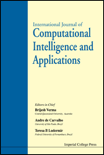
International Journal of Computational Intelligence and Applications
Exploring New Horizons in Computational IntelligenceThe International Journal of Computational Intelligence and Applications, published by WORLD SCIENTIFIC PUBL CO PTE LTD, is a prominent journal dedicated to advancing the field of computational intelligence and its applications, with a keen focus on innovative methodologies and theoretical frameworks. With an impact factor reflective of its growing influence, the journal is classified in Q3 for Computer Science Applications and holds Q4 standings in both Software and Theoretical Computer Science as of 2023, showcasing its critical niche within these disciplines. Established in 2008 and converging through 2024, this journal serves as a vital resource for researchers, professionals, and students in Singapore and beyond, promoting scholarly communication and collaboration. Although it is a non-open access journal, it still provides a wealth of information that is readily accessible through institutional subscriptions and library resources. Researchers contributing to the journal benefit from its wide reach and dedicated readership, making it a substantial platform to disseminate groundbreaking research and insights.
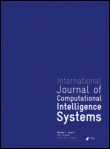
International Journal of Computational Intelligence Systems
Exploring the Frontiers of Computational ResearchInternational Journal of Computational Intelligence Systems, published by SPRINGERNATURE, is a leading open-access journal that has been at the forefront of research in the field of computational intelligence since 2008. With an ISSN of 1875-6891 and an E-ISSN of 1875-6883, this journal occupies a prominent place in the academic landscape, achieving impressive rankings in its categories: Q2 in both Computational Mathematics and Computer Science (miscellaneous), reflecting its significance and relevance to researchers, professionals, and students. Based in Switzerland, the journal is committed to disseminating high-quality research and fostering innovation in computational methodologies, algorithms, and applications. Its strong impact factor and Scopus rankings—31/189 in Computational Mathematics and 53/232 in General Computer Science—underscore its critical role in advancing knowledge in these interdisciplinary fields. As an open-access journal, it provides unparalleled accessibility to cutting-edge research, supporting the global community in staying at the forefront of computational intelligence advancements.
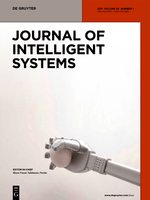
Journal of Intelligent Systems
Fostering Global Collaboration in Intelligent ResearchThe Journal of Intelligent Systems, published by DE GRUYTER POLAND SP Z O O, is a premier open access journal that has been at the forefront of advancements in the fields of Artificial Intelligence, Information Systems, and Software Engineering since its inception in 1991. With a commitment to disseminating high-quality research, the journal has been recognized in the 2023 category quartiles as Q3 in these critical areas, reflecting its relevance and impact in the academic community. The journal serves as a vital platform for researchers, professionals, and students interested in the evolving landscape of intelligent systems, offering insights into innovative methodologies and applications. As an open access publication since 2020, it ensures that research is readily available to a global audience, fostering collaboration and engagement within the scientific community. With a Scopus rank in the 65th to 69th percentiles across its categories, The Journal of Intelligent Systems continues to contribute significantly to the discourse on intelligent technologies and their implications for the future.

NEURAL COMPUTING & APPLICATIONS
Exploring Innovative Solutions in Neural ComputingNEURAL COMPUTING & APPLICATIONS is a premier journal dedicated to the burgeoning fields of Artificial Intelligence and Software Engineering, published by Springer London Ltd. Established in 1993, the journal serves as a pivotal platform for disseminating cutting-edge research and innovative applications in neural computing, covering a broad range of topics from algorithm development to real-world applications. With its impressive categorization in the 2023 Journal Quartiles—ranging Q2 in Artificial Intelligence and Q1 in Software—it stands out in its discipline, ranking 42nd out of 407 in Computer Science Software and 50th out of 350 in Computer Science Artificial Intelligence, reflecting its significant impact in the academic community. Although not an open access journal, it provides vital access to significant findings and methodologies that drive advancements in technology. Researchers, professionals, and students looking to stay abreast of the most relevant and impactful developments in these fields will find NEURAL COMPUTING & APPLICATIONS an indispensable resource.
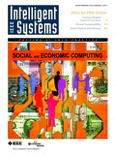
IEEE INTELLIGENT SYSTEMS
Advancing Knowledge in Intelligent SystemsIEEE Intelligent Systems, published by the renowned IEEE Computer Society, stands at the forefront of research in the fields of Artificial Intelligence and Computer Networks and Communications. With an impressive Q1 ranking in both categories as of 2023 and Scopus rankings placing it in the top 5% of its field, this journal not only showcases cutting-edge scientific advancements but also serves as a vital resource for practitioners, academics, and students seeking to deepen their understanding and application of intelligent systems. The journal covers a broad range of topics including machine learning, data mining, and system architectures, reflecting its commitment to addressing contemporary challenges and innovations in technology. Although it does not offer open access, the journal's research contributions are invaluable, ensuring that its readership remains engaged with the latest findings and applications in a rapidly evolving field. For those interested in submitting high-quality research or staying updated on the latest developments, IEEE Intelligent Systems represents an essential hub of knowledge.
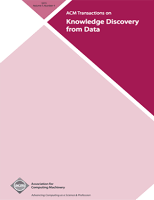
ACM Transactions on Knowledge Discovery from Data
Empowering Researchers with Knowledge Extraction TechniquesACM Transactions on Knowledge Discovery from Data (TKDD), published by the Association for Computing Machinery, is a prestigious journal at the forefront of the interdisciplinary realm of data mining and knowledge discovery. With an impressive Q1 ranking in Computer Science and a Scopus rank of #43 out of 232, this journal stands out as a top-tier resource for innovative research that addresses complex challenges in data science. Covering impactful studies from 2007 to 2024, TKDD presents cutting-edge algorithms, methodologies, and applications that shape the future of knowledge extraction from vast datasets. While not an open-access journal, it provides a platform for researchers, professionals, and students to disseminate their findings and engage with the latest advancements in this rapidly evolving field. By fostering collaboration and knowledge sharing, TKDD plays a vital role in advancing the understanding and application of data analysis techniques, making it an essential read for anyone involved in the pursuit of knowledge from data.

JOURNAL OF INTELLIGENT INFORMATION SYSTEMS
Catalyzing Knowledge in Intelligent Information TechnologiesThe Journal of Intelligent Information Systems, published by Springer since 1992, is a premier academic journal that offers a multidisciplinary platform in the fields of Artificial Intelligence, Computer Networks and Communications, Hardware and Architecture, Information Systems, and Software. With an impressive impact reflected in its 2023 Q2 category rankings across multiple domains and a commendable standing in the Scopus Rankings—ranking #84 in Computer Networks and Communications and #101 in Artificial Intelligence—the journal is recognized for its contribution to advancing knowledge and innovation. Although it is not an open-access journal, its accessibility through institutional subscriptions ensures that a wide range of researchers, professionals, and students can engage with high-quality, peer-reviewed research that addresses the latest advancements and trends in intelligent systems. For over three decades, this journal has effectively bridged gaps between academia and industry, making it a vital resource for those aiming to push boundaries in intelligent information systems.

Intelligent Decision Technologies-Netherlands
Advancing the Future of Intelligent Systems.Intelligent Decision Technologies-Netherlands, published by IOS PRESS, is an emerging journal dedicated to the dynamic fields of Artificial Intelligence, Computer Vision, and Human-Computer Interaction. Established in 2007 and continuing through 2024, this journal aims to foster interdisciplinary research and innovation by providing a platform for cutting-edge studies and applications of intelligent systems. While its current impact factor reflects a growing influence within the scientific community, with quartile rankings ranging from Q3 to Q4 in various pertinent disciplines, Intelligent Decision Technologies plays a pivotal role in shaping future research directions. Although the journal does not offer open access, it remains accessible across academic institutions, encouraging researchers, professionals, and students to contribute to and engage with the latest advancements in decision technologies. With a commitment to quality and relevance, this journal seeks to advance knowledge and enhance the understanding of intelligent systems in today's rapidly evolving technological landscape.

IEEE Computational Intelligence Magazine
Connecting Scholars and Practitioners in Computational IntelligenceIEEE Computational Intelligence Magazine, published by the esteemed IEEE-INST ELECTRICAL ELECTRONICS ENGINEERS INC, is an essential resource for researchers and professionals in the fields of Artificial Intelligence and Theoretical Computer Science. With a robust Q1 ranking in both categories for 2023, this magazine stands out as a leader in disseminating cutting-edge research and innovative applications within computational intelligence. As an invaluable conduit for knowledge, it covers a diverse range of topics, including but not limited to machine learning, neural networks, and data mining. The magazine is particularly recognized for its interdisciplinary approach, bridging gaps between theory and application while contributing to advancements in technology and society. Although it does not offer open access, the insights provided are critical for staying at the forefront of this rapidly evolving discipline. Join a community of like-minded scholars and practitioners by exploring the latest findings and trends published from 2006 to 2024, operating from its headquarters at 445 Hoes Lane, Piscataway, NJ, United States.
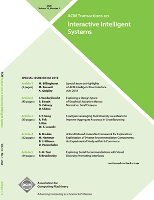
ACM Transactions on Interactive Intelligent Systems
Unveiling Insights at the Crossroads of Technology and Humanity.ACM Transactions on Interactive Intelligent Systems is a distinguished journal published by the Association for Computing Machinery (ACM), specializing in the realms of Artificial Intelligence and Human-Computer Interaction. With an impactful presence in the academic community, it boasts a respectable Q2 quartile ranking in both fields as of 2023, highlighting its significant contributions to advancing interactive intelligent systems. The journal, identified by ISSN 2160-6455 and E-ISSN 2160-6463, encompasses a broad spectrum of research from theoretical advancements to practical implementations, offering invaluable insights for researchers, professionals, and students. The journal not only serves as a platform for innovative ideas and methodologies but also emphasizes the importance of interdisciplinary approaches in its publications. Positioned in the United States, at 1601 Broadway, 10th Floor, NEW YORK, NY 10019-7434, it stands out for its commitment to quality, rigor, and relevance within the computing and interactive systems sectors.